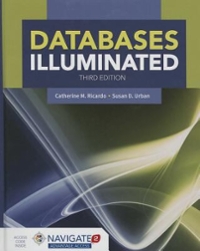Answered step by step
Verified Expert Solution
Question
1 Approved Answer
This problem provides a numerical example of encryption using a one-round version of DES. We start with the same bit pattern for both the key
This problem provides a numerical example of encryption using a one-round version of DES. We start with the same bit pattern for both the key K and the plaintext block, namely:
Hexadecimal notation: 0 1 2 3 4 5 6 7 8 9 A B C D E F
Binary notation: 0000 0001 0010 0011 0100 0101 0110 0111
1000 1001 1010 1011 1100 1101 1110 1111
(Note: Please represent the result of each sub question using hexadecimal notation. Please also check the Appendix 1 in this document for the definitions of DES S-Boxes.)
- Derive K1, the first-round subkey.
- Derive L0, R0.
- Expand R0 to get E[R0], where E[] is the Expansion/permutation (E table) in DES.
- Calculate A = E[R0] K1.
- Group the 48-bit result of (d) into sets of 6 bits and evaluate the corresponding eight S-box substitutions.
- Concatenate the results of (e) to get a 32-bit result, B.
- Apply the permutation P to get P(B), where P() is the Permutation (P) table in DES.
- Calculate R1 = P(B) L0 .
- Write down the ciphertext.
Step by Step Solution
There are 3 Steps involved in it
Step: 1

Get Instant Access to Expert-Tailored Solutions
See step-by-step solutions with expert insights and AI powered tools for academic success
Step: 2

Step: 3

Ace Your Homework with AI
Get the answers you need in no time with our AI-driven, step-by-step assistance
Get Started


